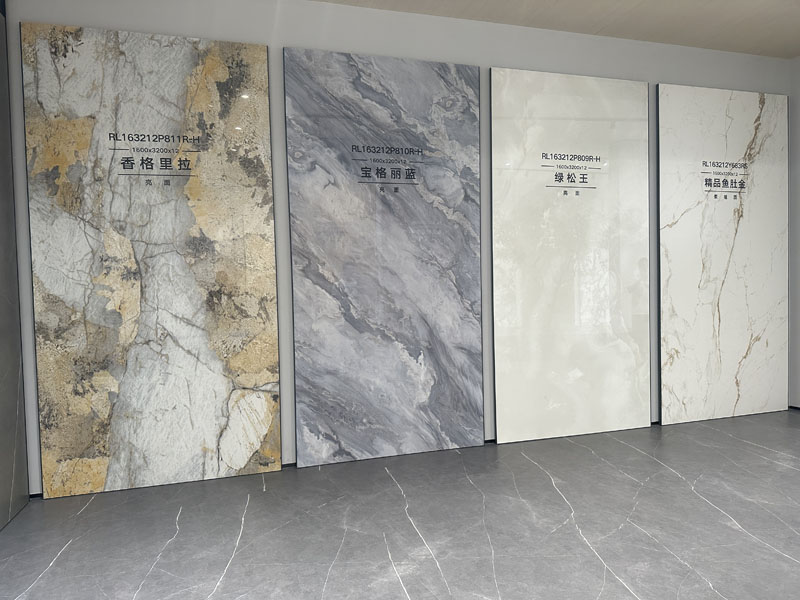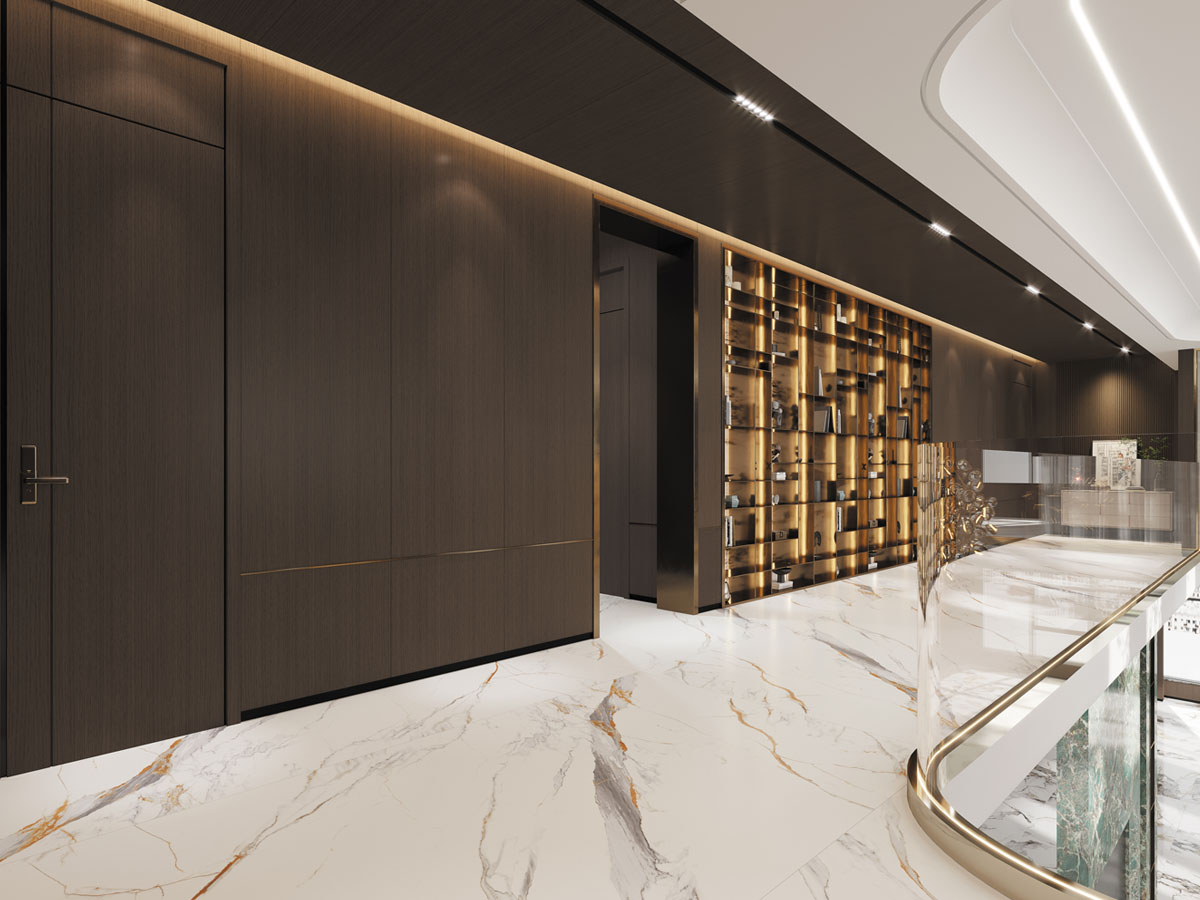What's the difference between sintered stone and porcelain tile
Sintered Stone & Porcelain tile
As we all know, sintered stone is also known as big porcelain slab, sintered stone and porcelain tile are commonly used materials in modern architectural decoration, although they come from the same kind of raw materials, but in the production process, physical characteristics, application range, there are obvious differences. So what are the different properties of sintered stone (big porcelain slab) and porcelain tile?
1.Raw materials and ingredients

Sintered Stone:
The main raw materials of sintered stone are natural stone, clay and other inorganic non-metallic materials, usually choose quartz stone, feldspar powder and other as the main raw materials, through special process formula high temperature firing into big porcelain slab.

Porcelain tile:
The main raw materials of porcelain tile are clay, quartz sand, etc., made by high temperature calcination. Its composition is relatively simple, mainly clay minerals made into small size porcelain slab.
2.Production Process

Sintered Stone:
Requires a large press of over 10,000 tons to compress the blank, resulting in a very high-density blank with a more compact internal structure. The firing temperature is usually between 1200℃ and 1500℃, and it becomes a big porcelain slab by firing for a long time.

Porcelain tile:
The pressing pressure is relatively small, and common pressing processes such as dry pressing or extrusion are often used. The firing temperature is generally between 1000℃ and 1200℃, and the firing time is shorter.
3.Performance Characteristics

Sintered stone:
Sintered stone big porcelain slab has a very high hardness, Mohs hardness of 6-7, its internal structure is dense, has a very low water absorption, has excellent bending strength, and has a strong scratch resistance and wear resistance.

Porcelain tile:
Mohs hardness is generally about 5-6, making it easier to be scratched by sharp objects, with relatively low bending strength, water absorption varies by type, generally between 0.5% and 10%.
4.Appearance

Sintered stone:
It is characterized by large size, common specifications such as 1200mm×2400mm, 1600mm×3200mm, etc., big porcelain slab on the grain can accurately simulate the texture of various natural stones, strong sense of reality and strong sense of layering. Through different surface treatment, it can also show a variety of textures such as gloss, matte.

Porcelain tile:
The porcelain slab for tile size is relatively small, with common ones being 600mm×600mm, 800mm×800mm, etc; The texture and texture are relatively single, although there are products that mimic stone textures, they are less detailed and realistic compared to sintered stone(big porcelain slab).
5.Application Range

Sintered stone:
In addition to traditional wall and floor decoration, big porcelain slab is widely used in making countertops for kitchens, bathroom vanities, dining tables, coffee tables, and other furniture. It is also used for background walls, decorative columns, etc. in commercial places.

Porcelain tile:
Mainly used for wall and floor tiling in homes, public places, etc. In special environments such as bathrooms and kitchens, appropriate tile varieties need to be selected according to waterproof and anti-slip requirements.




